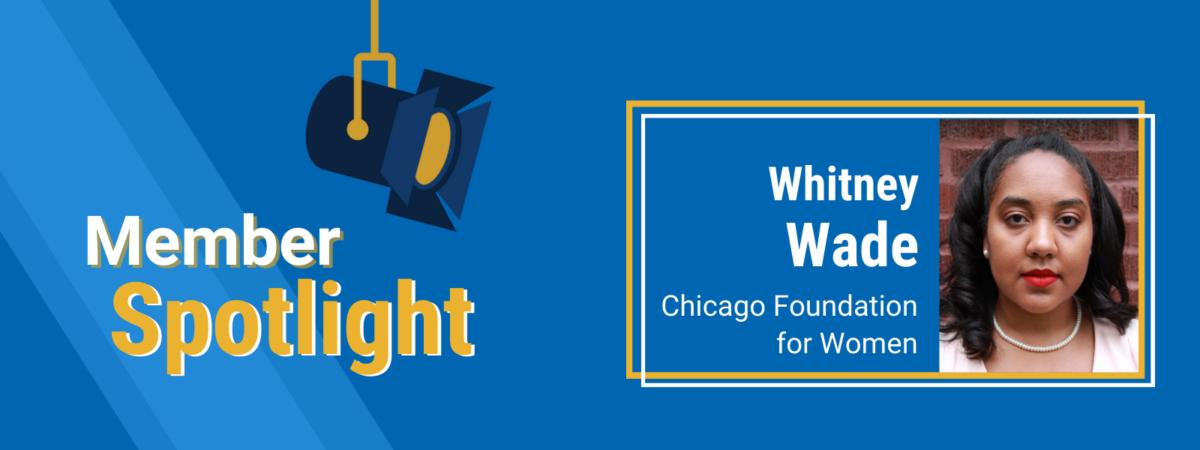 Meet our members! AFN’s greatest asset is our members—a diverse network of national, regional, and community-based foundations, financial institutions, and grantmakers—investing in advancing equitable wealth building and economic mobility. Check back each month and meet your peers!
Meet our members! AFN’s greatest asset is our members—a diverse network of national, regional, and community-based foundations, financial institutions, and grantmakers—investing in advancing equitable wealth building and economic mobility. Check back each month and meet your peers!
1: What is the mission of your organization and how is advancing equitable wealth building and economic mobility incorporated into the work?
CFW’s mission is to invest in women and girls as catalysts, building strong communities for all. Our goal in building toward economic mobility is to invest in organizations that are working toward racial and gender equity with a focus on preventing and ending poverty. Our approach to grantmaking also recognizes the importance and effectiveness of both direct service and policy advocacy approaches to solving issues like racial and gender wage gaps, unaffordable housing and evictions, and chronic underemployment and unemployment.
2: How does your organization currently or plan to explicitly and intentionally include and empower people of color in the design of your policies and strategies to close the racial wealth gap?
The foundation brings an understanding that Black, indigenous, and women of color are the most vulnerable in our communities and should be centered. Therefore, we work to support organizations that are led by women of color at all all levels, but specifically at the senior staff and board levels, who bring lived experiences to work alongside communities they serve. CFW is now specifically tracking how many of our grantee partners are women of color-led organizations. We also understand, because of our focus and experience in issues of gender, that women of color live intersectional lives where multiple factors – race, gender, employment, education, access to transit, affordable housing and childcare, financial supports, mental and physical health and wellness – affect our ability to thrive and support our families. We are proud to support organizations that have an intersectional, multi-pronged approached to problem-solving; whether it’s multi-service agencies using the Financial Opportunity Center model, organizations that offer stipends and free childcare as a best practice for clients in job training programs, or small and new organizations led by people of color that larger funders typically won’t support.
s
3: Where are we lacking investments as a sector that will result in greater economic equity, and how can we address the gap?
When it comes to capacity building and organizational development, our sector still does not offer enough general operating support to cover staff salaries, benefits, rent, utilities, and other expenses that make programs happen. There has been a growing conversation around this, but philanthropy can do a lot more, especially for Black-led organizations that are scrutinized more and trusted less with sizeable grants, multi-year support, and general operating dollars. This continues the cycle of burnout and scarcity that greatly affects people of color in nonprofits with less family wealth, many of whom are in the same financial straits as the clients we serve. Secondly, I’m really excited by the work being done around guaranteed income. It is a very promising way to help close gaps in economic equity. So much here is unaffordable and out of reach. What I find challenging is that we need to run pilot programs to prove what we already know: that people need financial support to be able to afford to live in an expensive metro area like Chicago. We are also lacking significant investments in housing and resources for entrepreneurs. It troubles me that support in these areas is almost always in the form of loans. The racial wealth gap was intentionally created through policy, systems, and plain old theft. We are not going to remedy that through financial products that still seek to exploit and make money off of Black and other people of color.
4: Share a question you would like to raise to your funder colleagues.
What steps, if any, is your organization taking to make sure that its internal policies and practices (particularly around compensation, benefits, remote work policies, financial wellness) match its external messaging and work around the importance of economic equity?
5: Are there any useful resources you would like to share with your funder colleagues?
There is a group of foundations here in Chicago working to change the way philanthropy invests in Black organizations, leaders, and causes. The goal is to move away from scarcity and to abundance. I find this model incredibly helpful in thinking about how we do grantmaking and rethink concepts like capacity building and due diligence that have historically served as a way to gatekeep resources from organizations led by people of color.
Abundance Movement
6: What TV show are you watching and what do you like about it?
Kindred on Hulu, based off of the book by Octavia Butler.
About Whitney Wade, Program Officer, Women’s Economic Security, Chicago Foundation for Women
Chicago Foundation for Women was founded in 1984 to address the lack of philanthropic dollars going directly to organizations that support women and girls. We invest in Chicago area nonprofits working to address freedom from violence, economic security, and access to health. Last year, we funded more than 160 projects serving over 50,000 women, girls, transgender, and gender non-binary individuals.
Whitney leads CFW’s women’s economic security portfolio, which primarily funds programs/services that connect women and girls to career-track, family-sustaining jobs, education and training programs, and wraparound supports. She also serves on the Foundation’s Anti-Racism Transformation Team and has been a member of two of CFW’s seven volunteer-based giving councils and circles that are changing the profile of who we consider a philanthropist.

